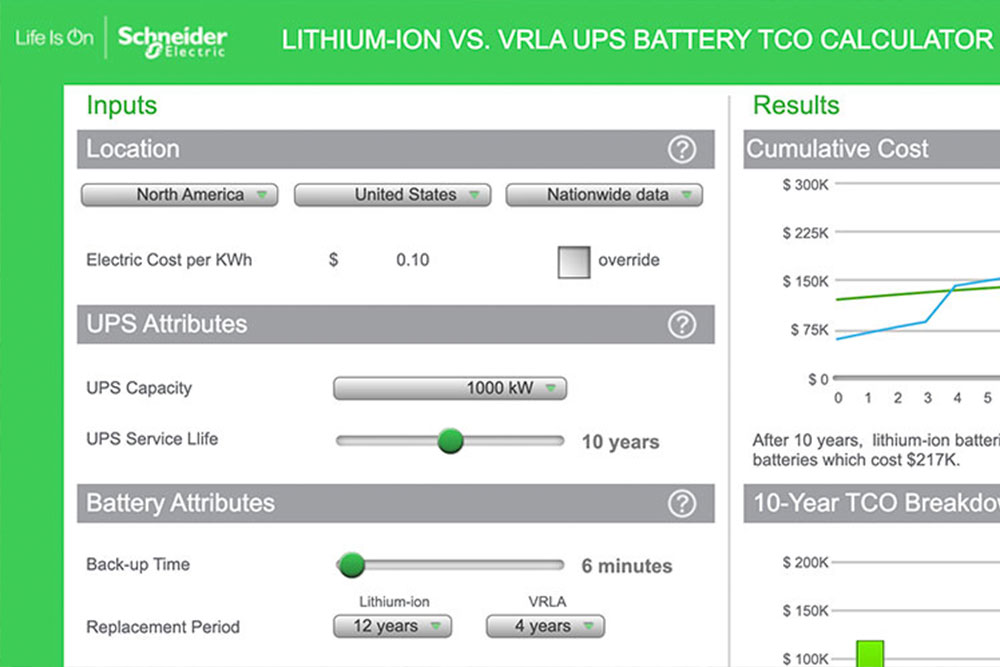Choosing the right UPS solution is a common topic we cover here at Data Centre Review, and despite all the advice, there’s still a lot of factors to take into account. Thankfully, Schneider Electric is hoping to make the choice between lithium-ion and VRLA batteries a little easier, with its new DataCentre TradeOff Tool.
The new tool is designed to enable customers and channel partners to model the long-term cost implication of utilising new edge computing and critical infrastructure technology. It details the costs incurred when deploying lithium-ion batteries over VRLA in UPS applications, taking into account several factors including the source location, the associated energy costs, the UPS capacity, service life, backup time, replacement period, and cost of real estate to house the cells.
“In late 2018, a Bloomberg New Energy Finance report forecasted that 40% of data centre battery backup would incorporate lithium-ion by the year 2025,” said Wendy Torell, senior research analyst, Schneider Electric Data Centre Science Centre.
“Among hyperscale data centres, this forecast is predicted to be even greater at 55%. Li-ion cells also present many benefits for critical power solutions used by Internet Giants, colocation and cloud service providers. Here space is often at a premium and the smaller footprint offers significant revenue advantages as more white space becomes available to accommodate customers.”
Li-ion batteries promise a lower TCO
According to Schneider Electric, one of the key benefits of lithium-ion is a lower total cost of ownership. This is due to both the physical design and cell chemistry of li-ion batteries, as they are smaller, lighter and have a longer life cycle than lead-acid batteries. They are also capable of withstanding a greater number of charge/discharge cycles, while simultaneously being capable of recharging more quickly. As a result, lithium-ion batteries generally require less service maintenance and less frequent replacement, which should in turn mean a lower total cost of ownership.
Studies conducted by Schneider Electric’s Data Centre Science Centre and detailed in White Paper #229: ‘Battery Technology for Data Centers’, found that over a 10-year period, Li-ion delivered a total cost of ownership that is between 10% and 40% lower than equivalent UPS systems based on VRLA batteries.
Schneider states that its tool will only recommend a product that the end-user actually needs, however. With it carefully analysing the exact situation the UPS will be used to ensure the optimal product choice. After all, there’s no use in a company investing heavily in a lithium-ion UPS if they can’t take advantage of its benefits.
For more information on Schneider Electric’s TradeOff Tools and to find out how they benefit both customers and partners, the company has scheduled a webinar for 2pm on Thursday, October 17. To register, click here. To check out Schneider’s new tool for yourself, you can find that on the company’s website.


